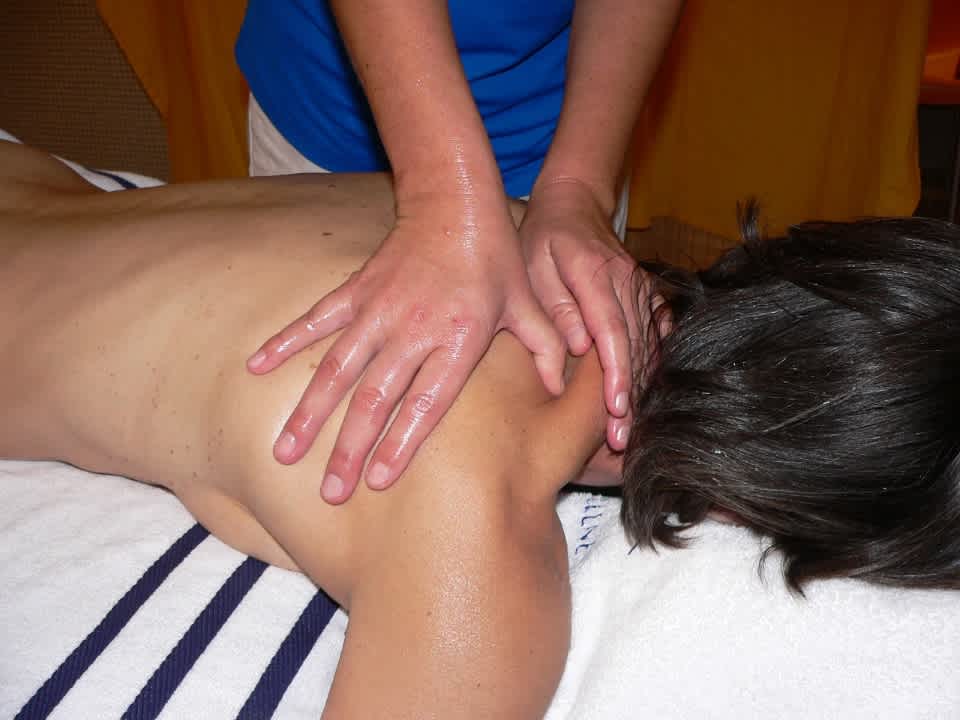As a Sports Massage Therapist, you will encounter clients having a sports massage for the first time, who may end up leaving wondering why it hurt so much. In this article, we go over why sports massages do hurt so much, as well as a few other questions you might receive from new and existing clients alike.
So, why does sports massage hurt so much? Think of a sports massage as a workout; if your client is new to sports massage, their muscles are being manipulated in ways that they’re not used to. This can result in pain similar to DOMS. The increased blood flow to the muscles and toxins being released may also impact soreness.
Read on to learn more about why sports massage hurts so much, and what clients can do to relieve or minimise the pain.
Why Does it Hurt After a Sports Massage?
It is completely normal for clients to feel sore after a sports massage. The techniques you use stimulate muscles that clients may not normally use, which results in delayed onset muscle soreness (DOMS), just like after exercise. This soreness is the body’s response to the inflammation and damage to soft tissues, as it heals.
The pain clients experience after a sports massage may reduce over time, however. Just like the body becomes accustomed to exercise, and DOMS becomes less severe, the same happens with sports massage. Clients’ bodies simply need to get used to being manipulated in such ways.
Why Do I Feel Worse After a Massage?
As well as clients’ muscles being unused to such manipulation as given in a sports massage, the increased blood flow to the muscles and the toxins being released from the body may also have an impact on the pain that clients experience post-massage.
Can a Sports Massage Cause Damage?
Both sports massage and deep tissue massage have a low risk of causing damage, but there are some groups that are at a higher risk of negative results. As such, the following groups of people should consult a doctor before undergoing sports massage, and should not be treated until they have been cleared:
- Those with a history of blood clots, or a clotting disorder
- Those with increased risk of injury, such as bone fractures
- Those with nerve injuries
- Elderly people
- Those that have recently had surgery or chemotherapy
- Those with skin conditions or wounds
- Those with a hernia
How to Relieve Soreness After a Sports Massage
Whilst there’s not much that clients can do to stop sports massage soreness from occurring, there are several things that you can recommend to help relieve the soreness. Although, this soreness should be mild and should subside within a couple of days, regardless.
- Stay hydrated and avoid alcohol, sugary, and caffeinated drinks
- Stretch
- Heat therapy
- Ice therapy
- Topical treatments such as a muscle rub
- Rest
What Should You Not Do After a Sports Massage?
To help clients receive maximum benefits, and to minimise soreness post-massage, there are a few recommendations that you can make regarding what clients should not do after a sports massage.
Don’t Eat a Large Meal
Whilst clients can feel hungry after an appointment, it’s best that they avoid heavy, unhealthy meals as it will only make them feel sluggish and bloated. Instead, advise clients to have a light snack on hand for after their appointment to deal with the immediate hunger, and consider recommending that they eat a light evening meal that day.
Avoid Caffeine, Alcohol, and Sugary Drinks
Sports massage helps to flush out toxins from the body. As such, it would be a good idea to recommend that your clients avoid alcohol, caffeine, and overly sugary drinks after their session. Instead, recommend water and herbal teas.
Avoid Strenuous Activity
Some experts recommend that clients rest and avoid strenuous activity for 12-24 hours after sports massage. This is to help hold onto the relaxation gained from sports massage, and to avoid injury.
How Long Does it Take to Recover From a Sports Massage?
Clients will be able to go about their everyday lives almost immediately after a sports massage appointment, although it is recommended that they take it easy for the remainder of the day. The soreness or pain that they experience after a sports massage session may last for up to 2 days afterward, however, this will vary between clients, and how used to the treatment they are.
Sports Massage Courses at Breeze Academy
Breeze Academy, one of the UK’s leading providers of CPD training, now offers Sports Massage training with Level 3 and Level 4 Sports Massage training courses available throughout the UK. Gain the knowledge and understanding needed to plan, provide and evaluate sports massage therapy.
If you’re interested in training to become a Sports Massage Therapist, you can learn about the route to becoming a Sports Massage Therapist here, and the differences between Level 3 and Level 4 sports massage qualifications here, in our recent blogs. We also go into detail in another recent blog about how sports massage can complement physiotherapy. Click to learn more. Check out our courses online now, or get in touch with us for more information.
